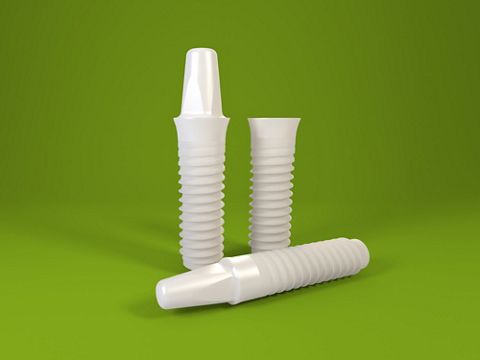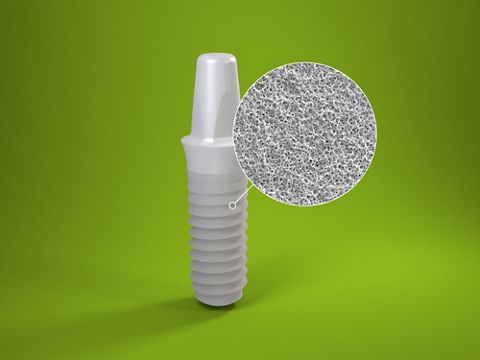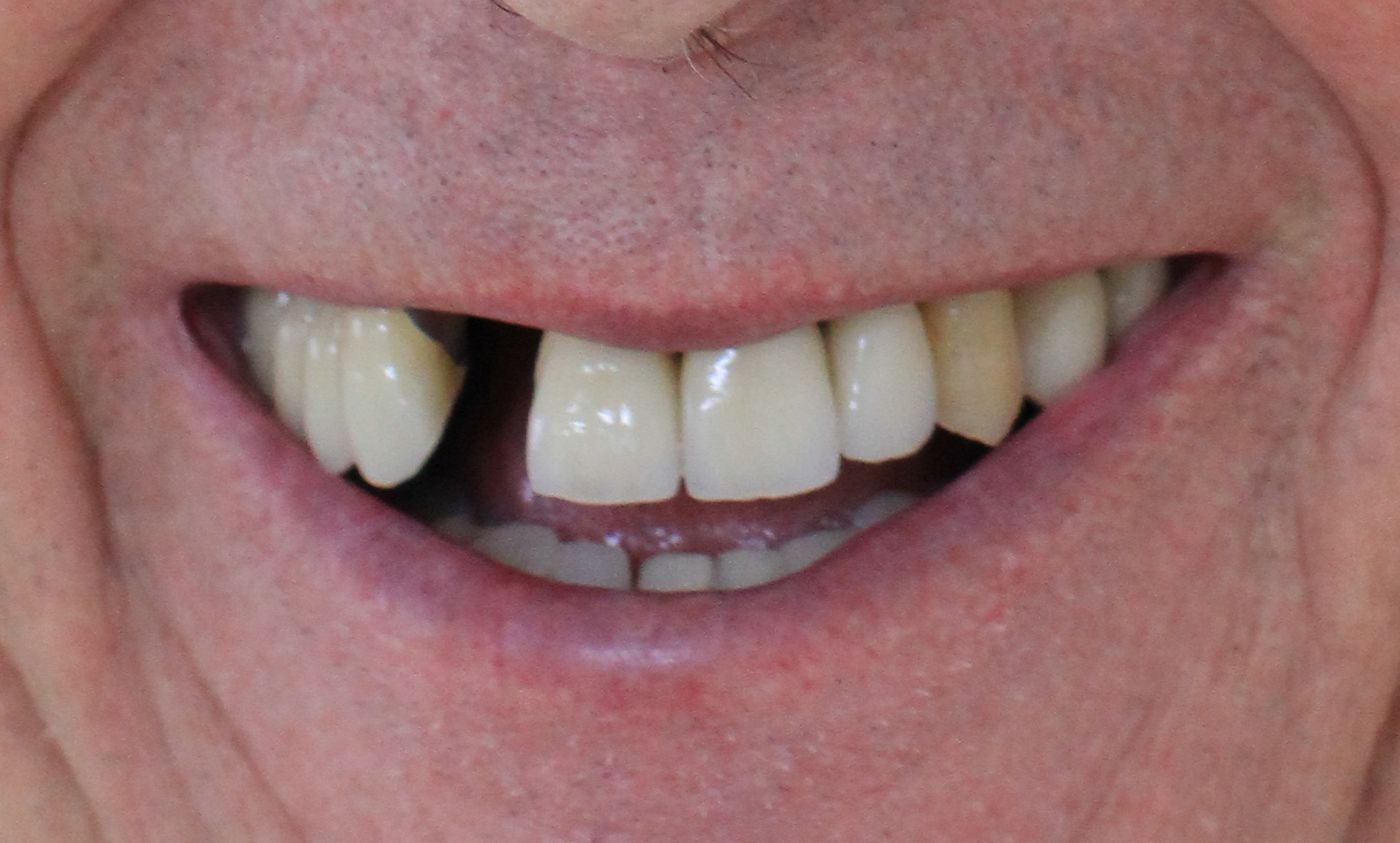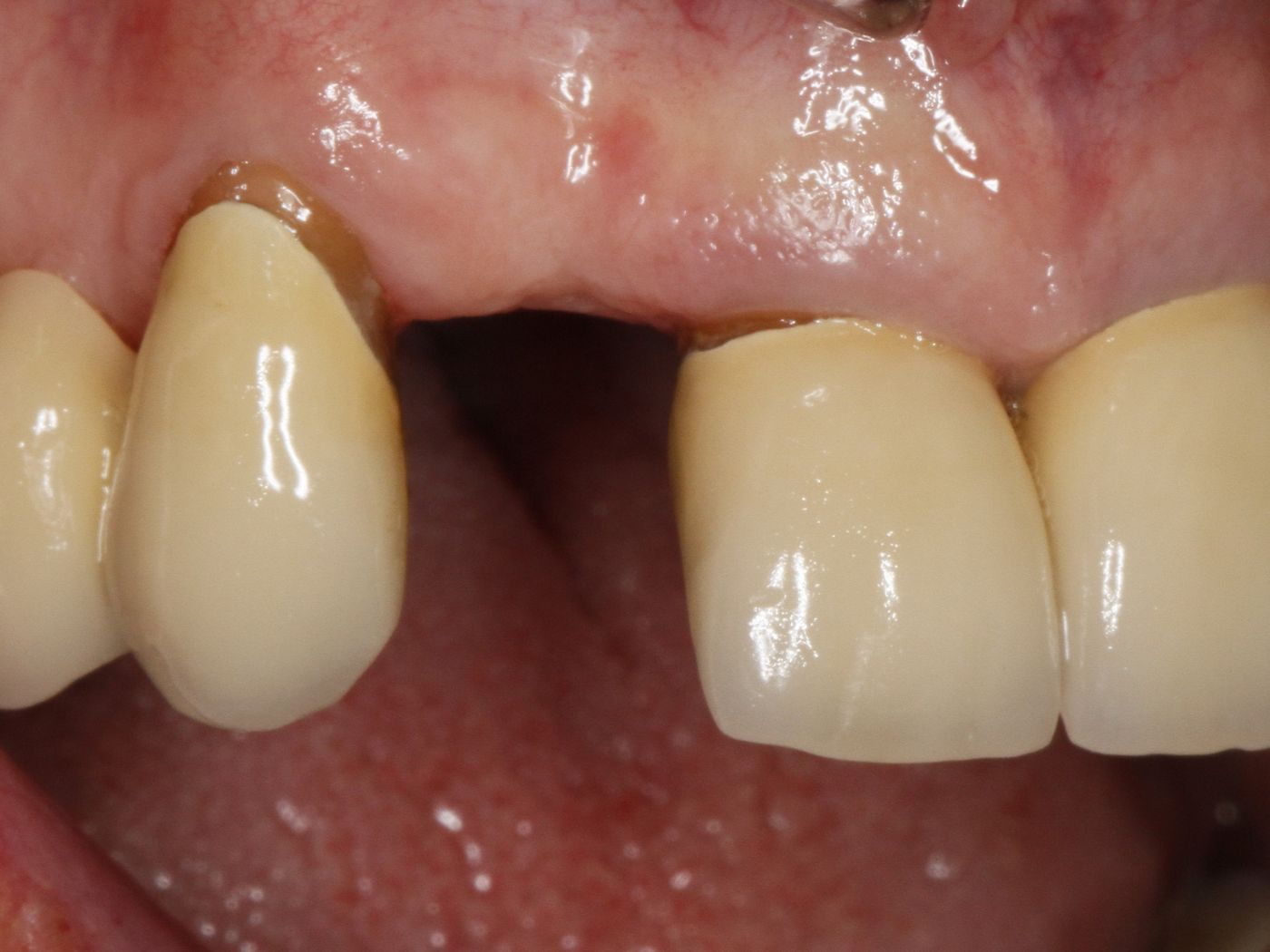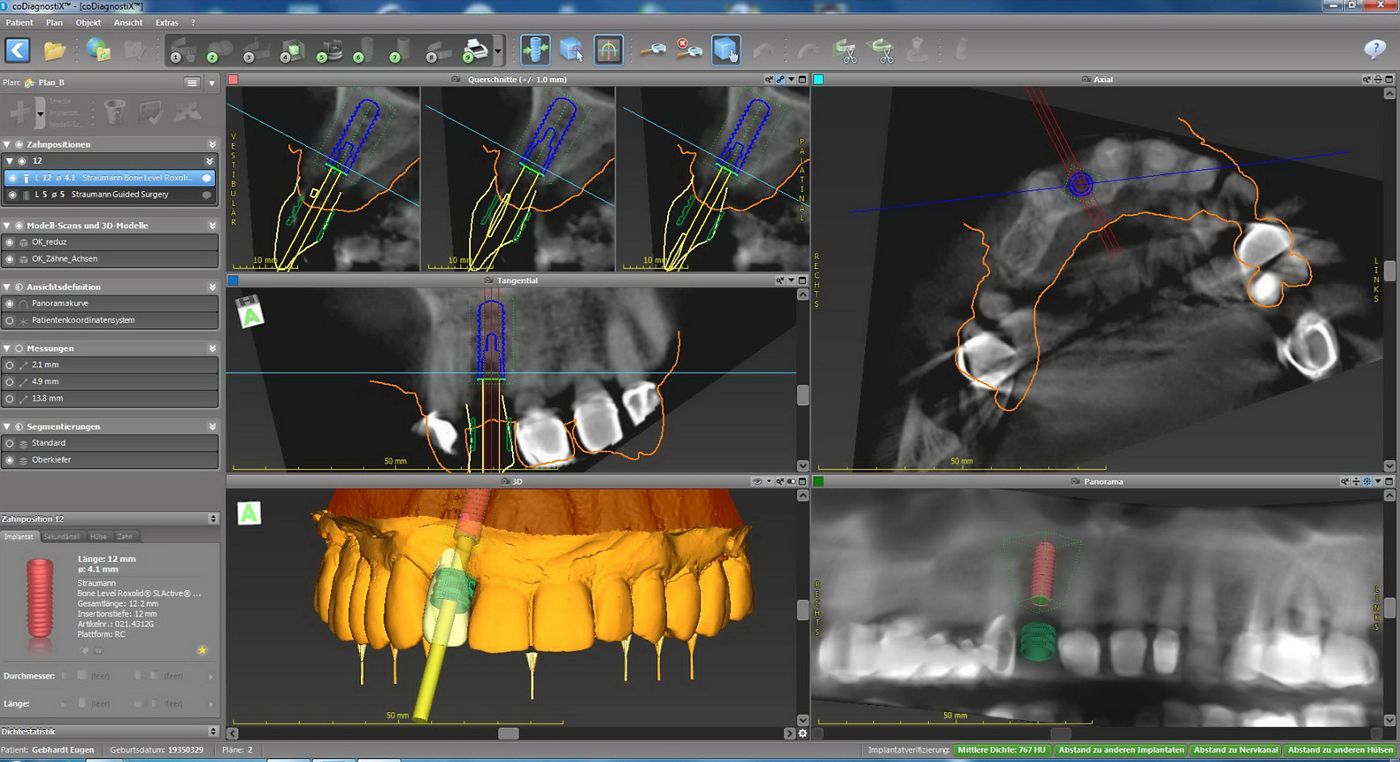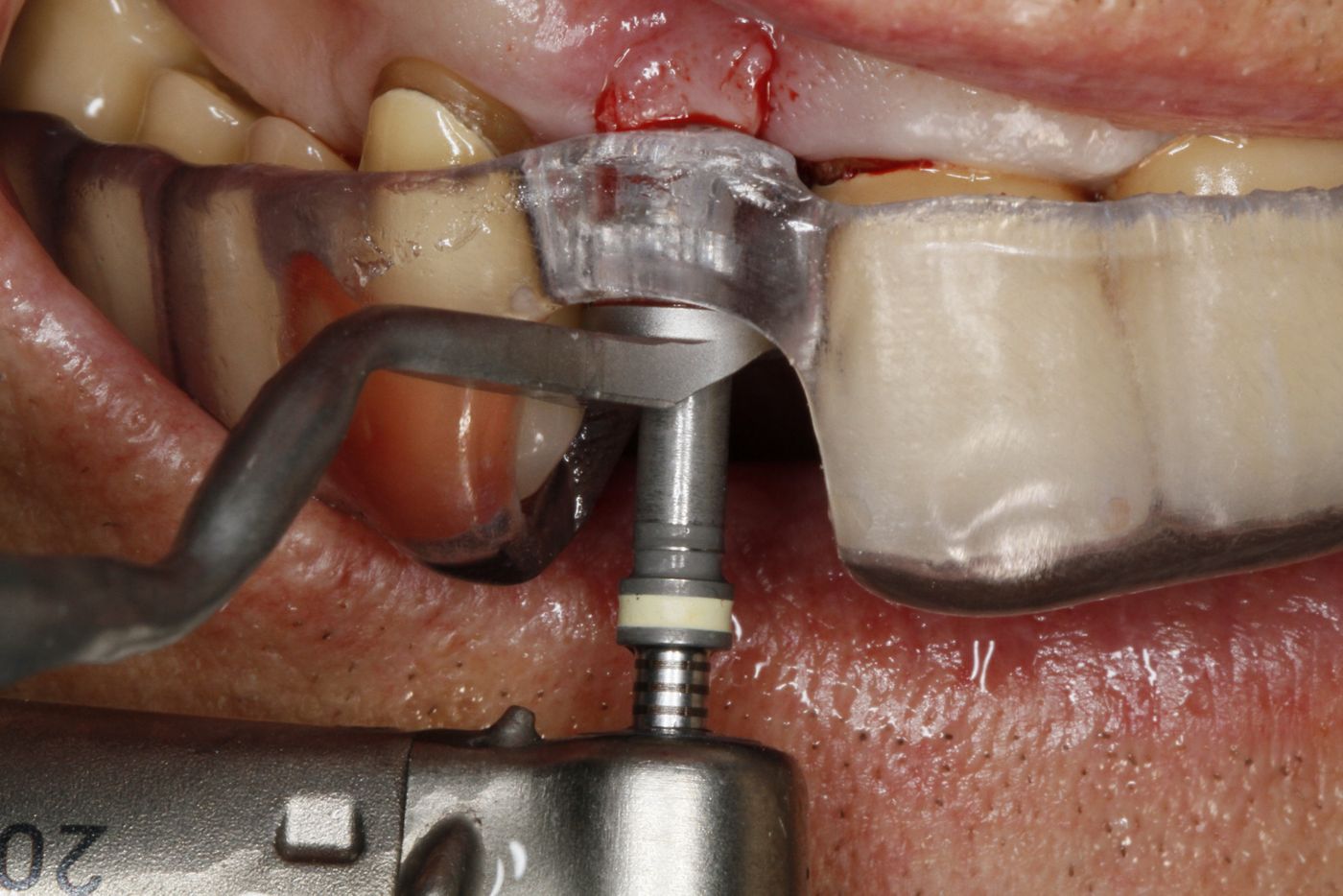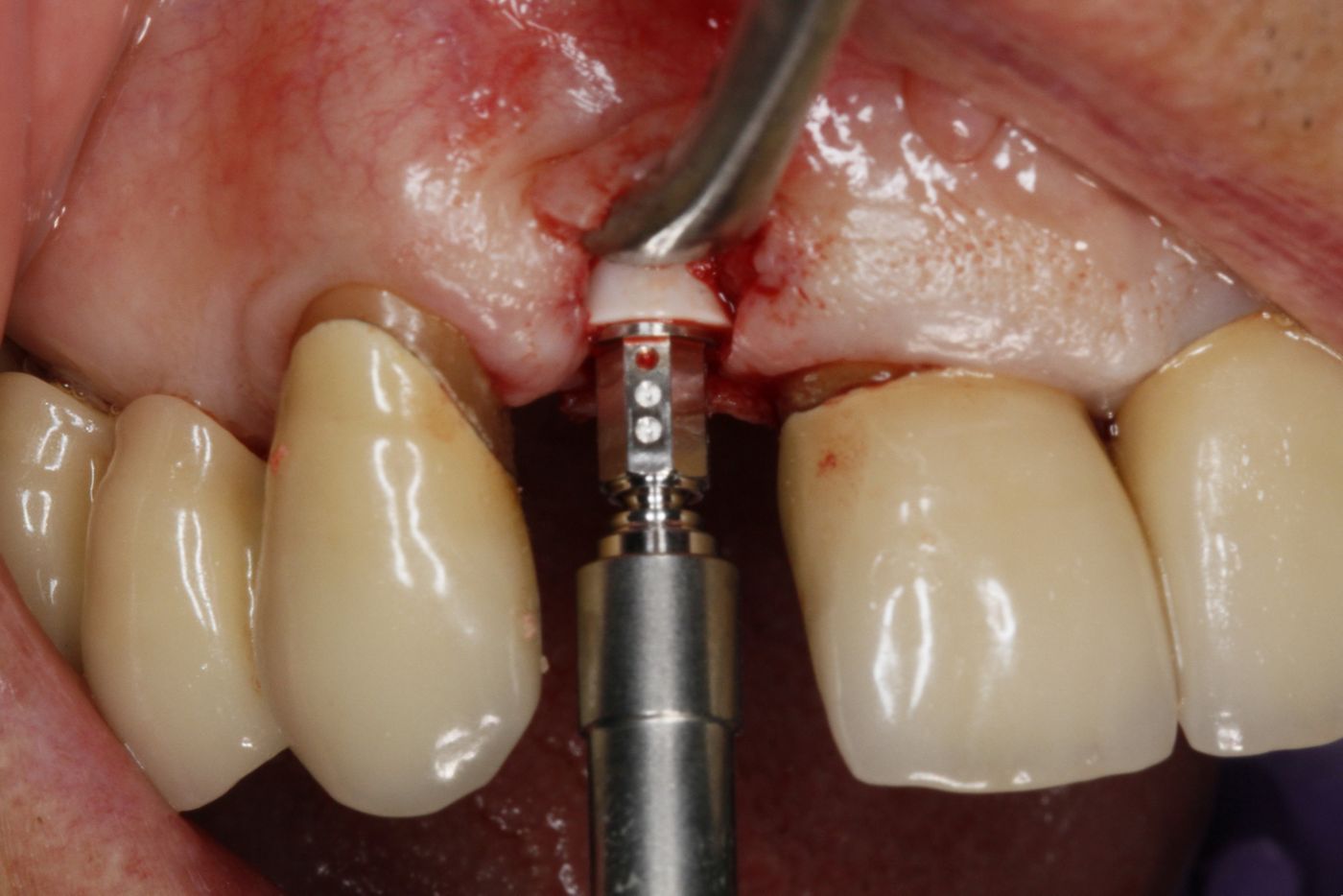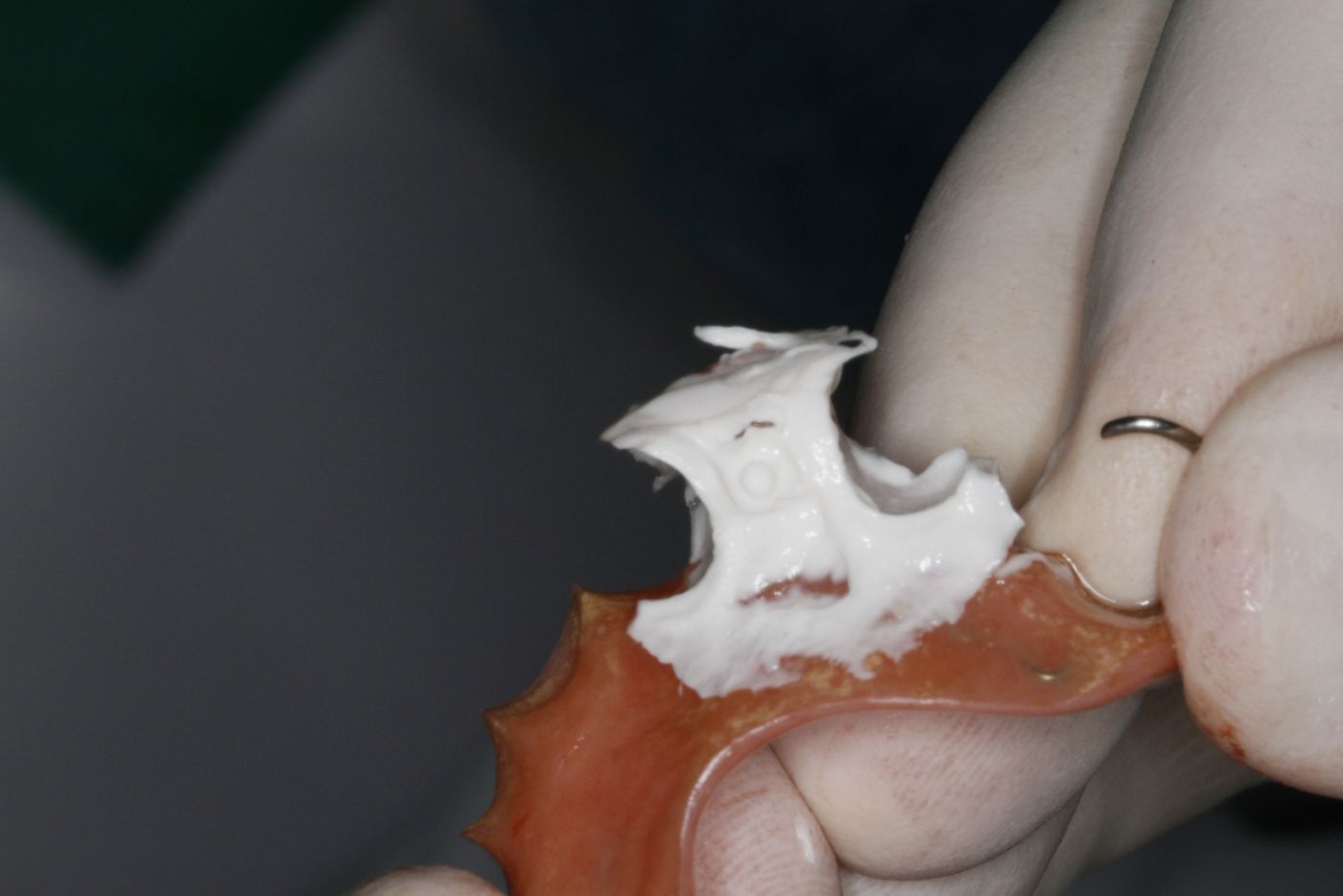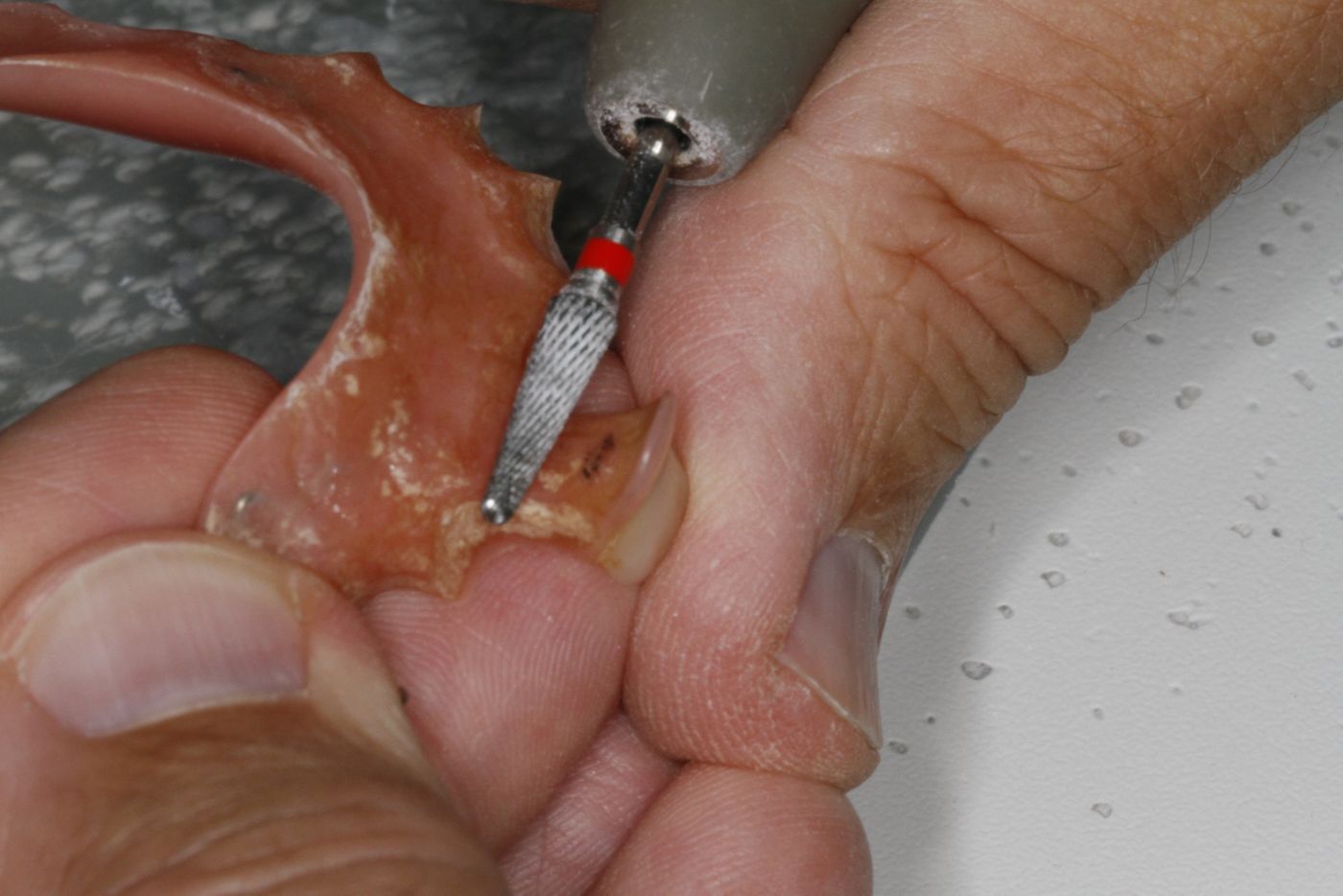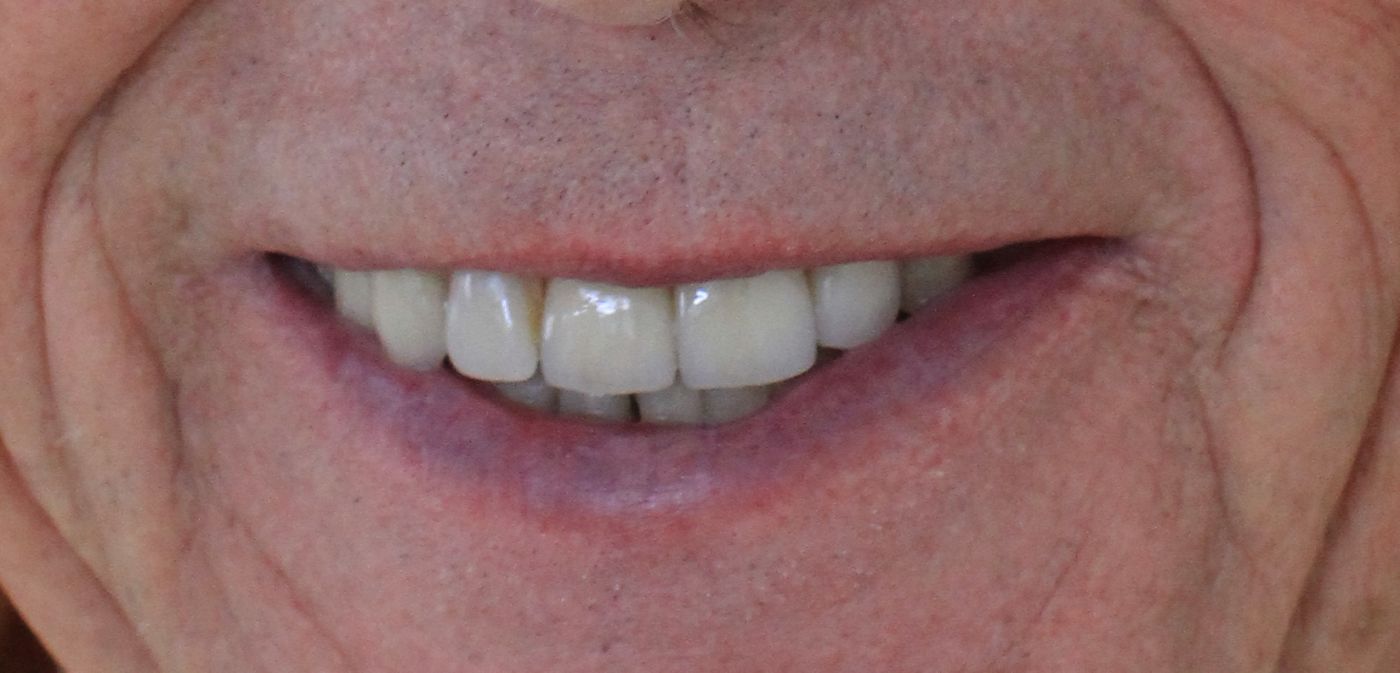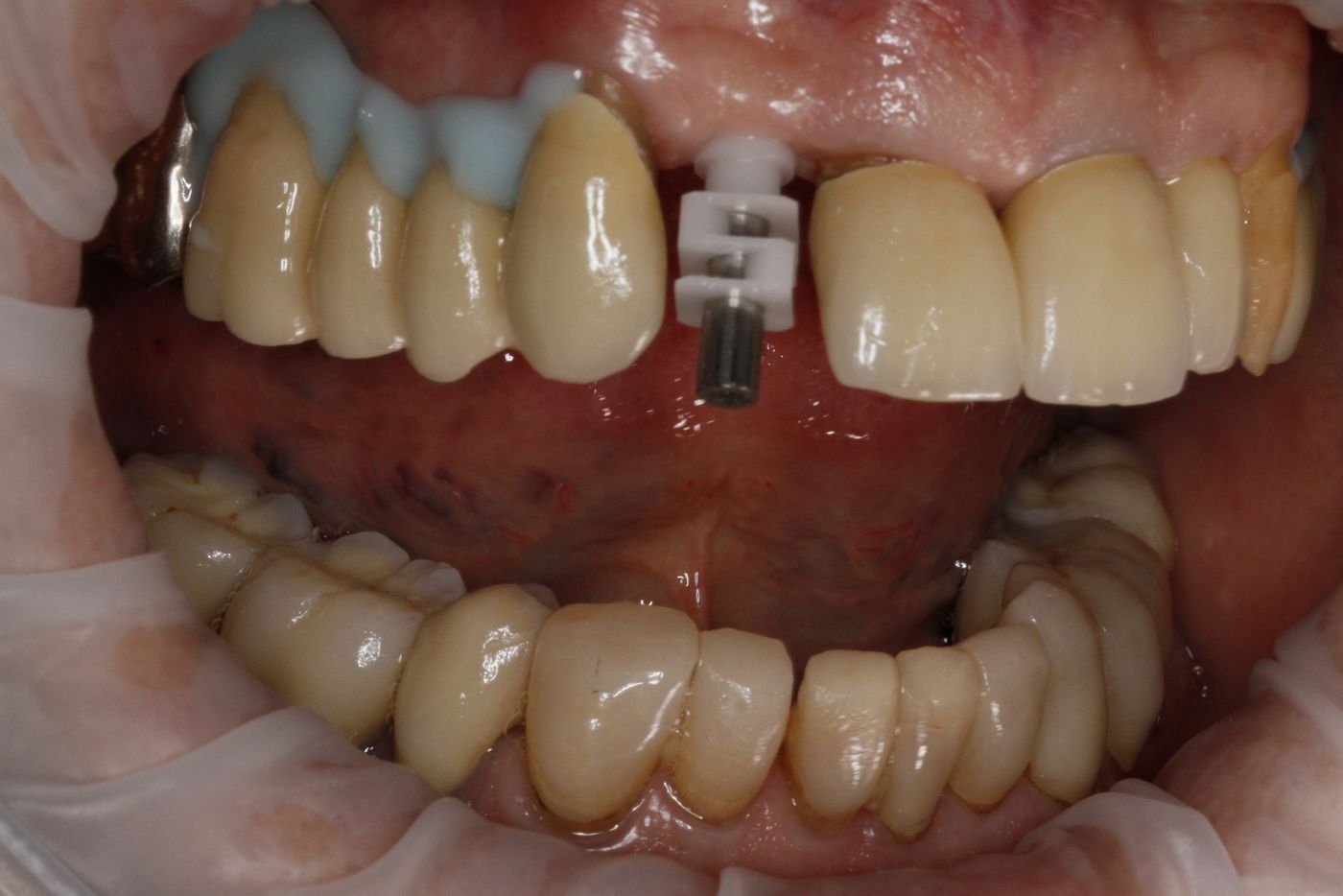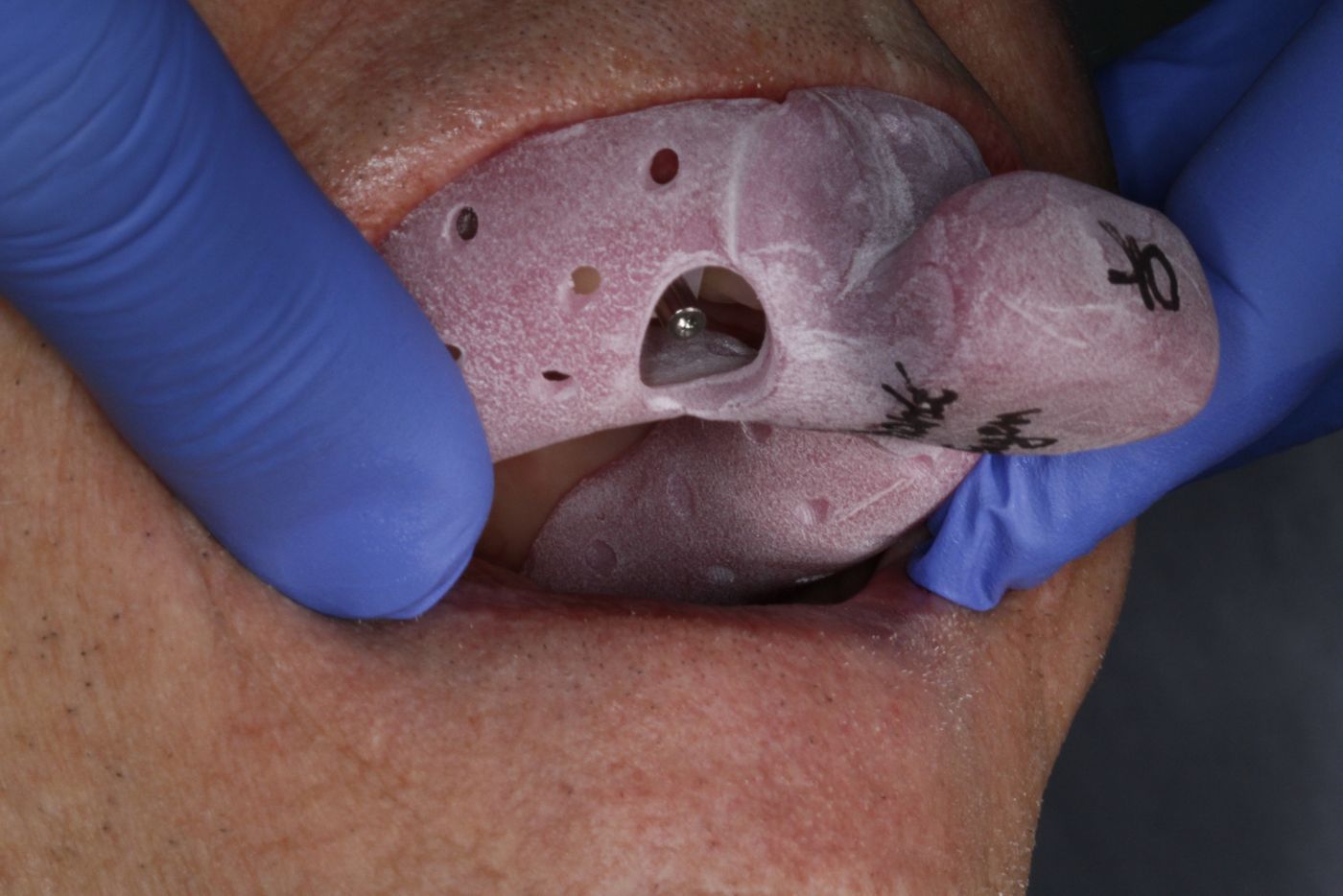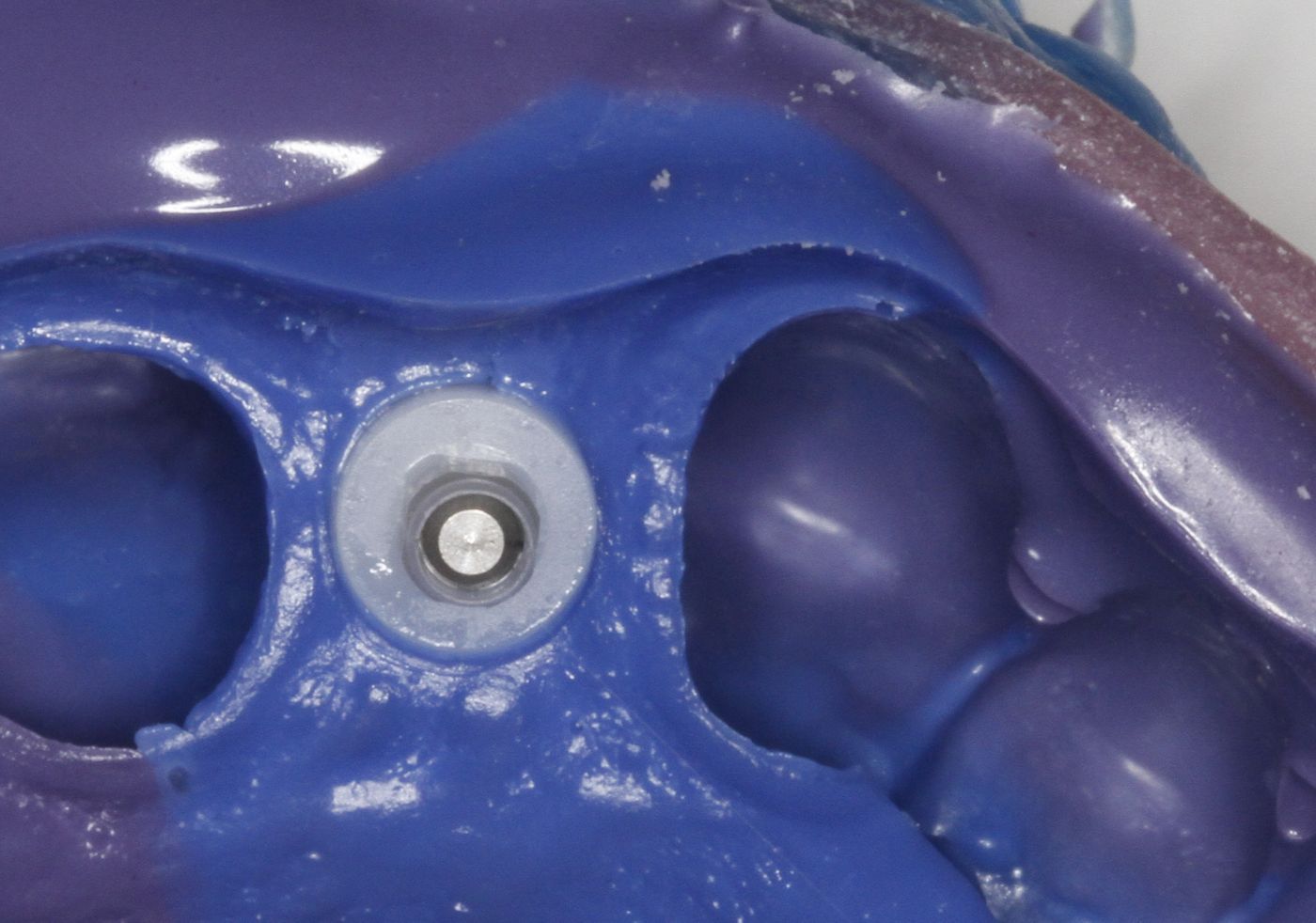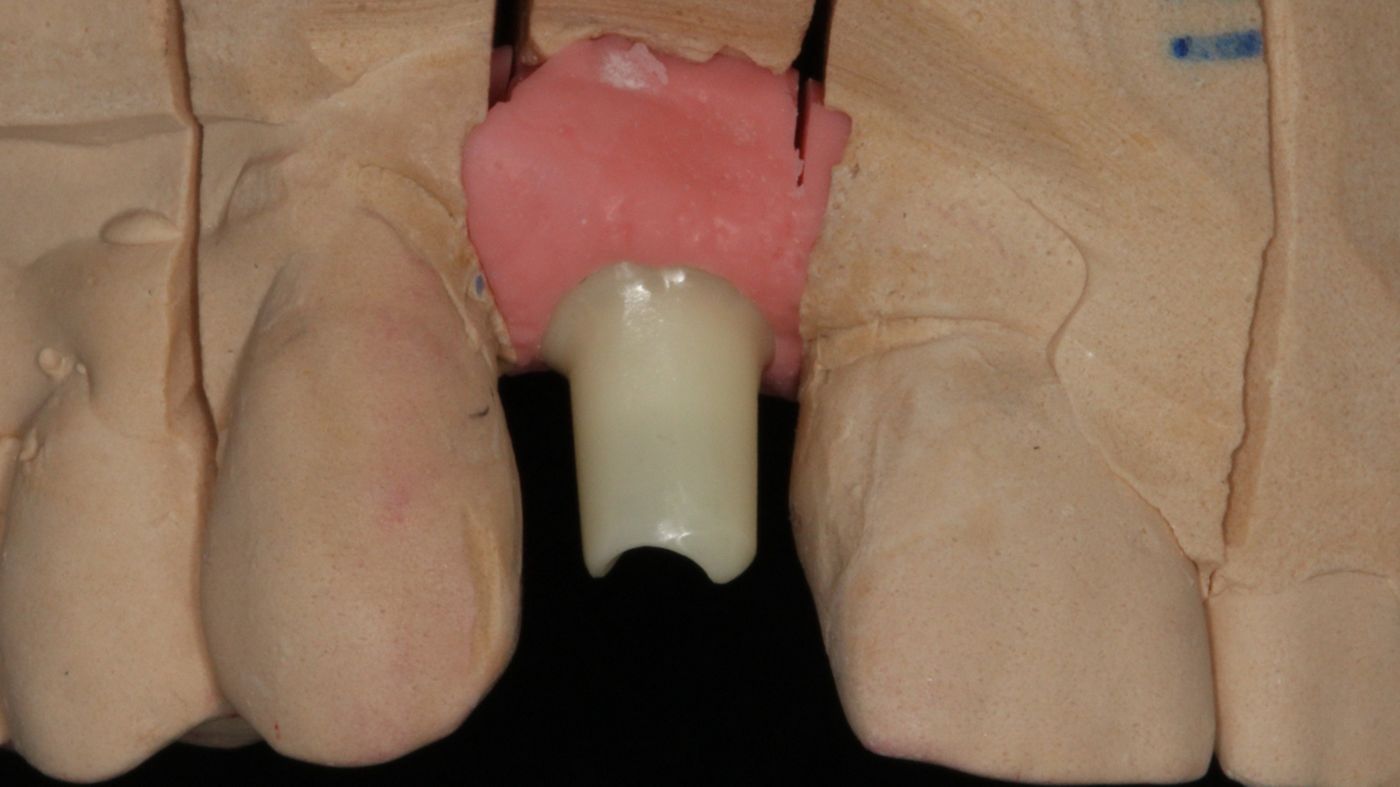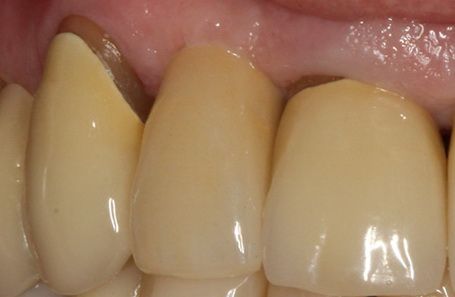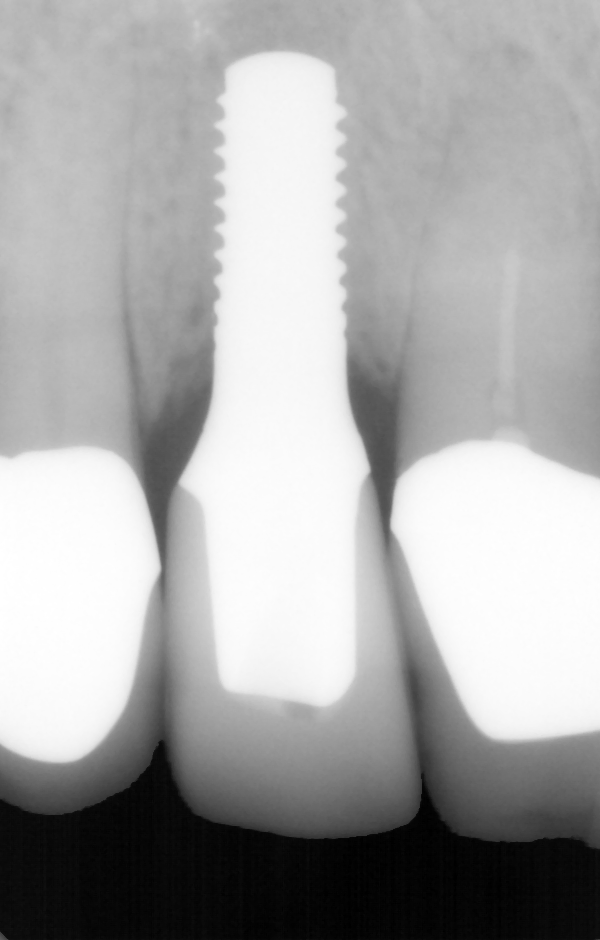Single-tooth restoration in the esthetic zone
A clinical case report by Franz-Jochen Mellinghoff, Germany
The following clinical case report describes a successful single tooth restoration of an esthetically compromised dentition using Straumann® PURE Ceramic Implant. The natural-looking ivory color of this implant allowed us to meet the expectations of patients who are seeking to achieve better esthetic outcomes.
Initial Situation
In our practice, we particularly emphasize the importance of an informative first conversation with new patients. The purpose of this conversation is to discuss the expectations about treatment goals and enable patients to make informed decisions. Patients currently desire a very good function, outstanding esthetic results, well-tolerated materials and longevity.
A healthy male patient came to our practice requesting a replacement of his missing right maxillary lateral incisor with an esthetic restoration. He had lost tooth #12 four years ago due a traumatic accident (Fig. 1). He presented good oral hygiene with healthy gingival tissues (Fig. 2).
Treatment planning
The treatment plan involved a detailed explanation of the intended therapy, including a series of extraoral and intraoral photographs, models and digital volume tomography (DVT) (Figs. 3-4).
To replace a missing tooth in region 12, we opted for a late implant placement. Given our positive experience with this method, we were able to offer the patient a safe, proven procedure and a good prognosis for an esthetically high-quality result. After evaluating all the diagnostic records, we were able to meet the request for a ceramic implant.
Surgical procedure
Implant surgery was carried out under local anesthesia. The surgical procedure was performed using a drilling template according to the protocol for the Straumann® PURE Ceramic Implant System. The ceramic implant was placed in the prepared osteotomy with a torque of 35 Ncm (Figs. 5-6).
During the osseointegration period the patient wore an existing temporary removable denture, which was relined with silicone and checked for pressure points to avoid any possible loading (Figs. 7-8). The slightly reduced temporary removable denture was used until the end of the healing phase and before the implant loading.
Prosthetic procedure
The patient was able to continue with his committed public life with the temporary removable denture and was also unrestricted in his ability to communicate (Fig. 9).
After the healing period, the impression for the definitive crown was made using an individual tray with polyether and a coping for open tray impressions (Figs. 10-12).
The implant crown (disilicate ceramic) was made on a titanium base (Straumann® CI RD PUREbase). (Fig. 13)
The crown was cemented with elastomeric resin cement. Adhesive cementation gives us a reliable result. Finally, refining occlusion was performed.

